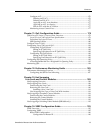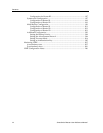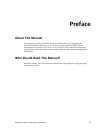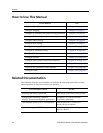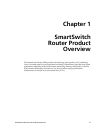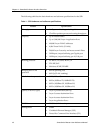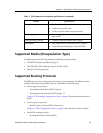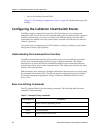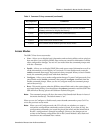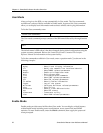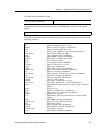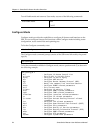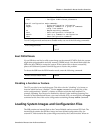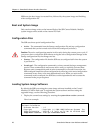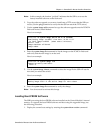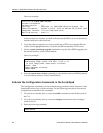
SmartSwitch Router User Reference Manual 21
Chapter 1: SmartSwitch Router Product Overview
Access Modes
The SSR CLI has four access modes.
• User – Allows you to display basic information and use basic utilities such as ping but
does not allow you to display SNMP, filter and access control list information or make
other configuration changes. You are in User mode when the command prompt ends
with the
>
character:
• Enable – Allows you to display SNMP, filter, and access control information as well as
all the information you can display in User mode. To enter Enable mode, enter the
enable command, then supply the password when prompted. When you are in Enable
mode, the command prompt ends with the
#
character:
• Configure – Allows you to make configuration changes. To enter Configure mode, first
enter Enable mode (enable command), then enter the configure command from the
Enable command prompt. When you are in Configure mode, the command prompt
ends with
(config)
.
• Boot – This mode appears when the SSR the external flash card or the system image is
not found during bootup. You should enter the reboot command to reset the SSR. If the
SSR still fails to bootup, please call Cabletron Technical Support.
Note:
The command prompt will show the name of the SmartSwitch Router in front of
the mode character(s). The default name is “ssr”.
When you are in Configure or Enable mode, enter the exit command or press Ctrl+Z to
exit to the previous access mode.
Note:
When you exit Configure mode, the CLI will ask you whether you want to
activate the configuration commands you have issued. If you enter Y (Yes), the
configuration commands you issued are placed into effect and the SmartSwitch
Router’s configuration is changed accordingly. However, the changes are not
written to the Startup configuration file in the Control Module’s boot flash and
therefore are not reinstated after a reboot.
Ctrl+F Move cursor forward one character
Ctrl+N Scroll to next command in command history (use the cli show
history command to display the history)
Ctrl+P Scroll to previous command in command history
Ctrl+U Erase entire line
Ctrl+X Erase from cursor to end of line
Ctrl+Z Exit current access mode to previous access mode
Table 2. Common CLI key commands (continued)
Key Sequence Command



